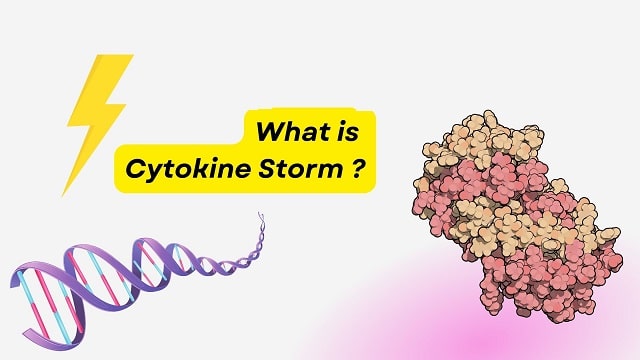Cytokine Storm
Cytokine storms occur when the immune system responds excessively to inflammation. As a result of this uncontrolled response, the body releases small proteins called cytokines. These chemicals are responsible for sending signals to immune cells to gather in the area of inflammation.
Symptoms of Cytokine Storm
This condition can occur in various parts of the body. That is why the symptoms vary, ranging from mild to life-threatening. Signs that someone is experiencing a cytokine storm include:
- Fever
- Chills
- Diarrhea
- Fatigue
- Aches and pains
- Headache
- Loss of appetite
- Nauseous
- Rash
- Weakness
- Vomit
In more serious cases, this condition can lead to organ failure. As a result, symptoms vary depending on the disease suffered. In the case of COVID-19, the symptoms of a cytokine storm that should be watched out for are:
- Continuous pain or pressure in the chest
- Confusion.
- Difficulty breathing.
- It’s hard to wake up.
- The skin, lips, and nails change color to pale, gray or blue.
Causes of Cytokine Storm
An overreaction of the immune system to a foreign substance or infection is the main cause of this condition. Other causes include:
- The immune system senses danger or threat when there is nothing actually harmful.
- The immune system’s reaction is greater than the threat of foreign substances.
- A foreign substance causes significant damage to the point that the immune system is unable to handle it. As a result, the immune system overreacts or goes into prolonged or prolonged overreaction.
- The immune system does not completely shut down once the foreign substance has been successfully eliminated.
Risk Factors for Cytokine Storm
Cytokine storms can be triggered by immunotherapy such as monoclonal antibody therapy or autoimmune diseases such as lupus. However, this condition is more susceptible to someone who has a serious infection. Some diseases that can trigger this condition include:
- SARS-CoV-2 infection that causes COVID-19.
- Yersinia pestis or plague.
- Bird flu.
- Dengue fever.
- Severe acute respiratory syndrome (SARS).
- Middle East respiratory syndrome (MERS).
- Graft-versus-host disease.
- Sepsis.
Cytokine Storm Diagnosis
The doctor performs a physical examination and asks about symptoms to diagnose this condition. To confirm it, the doctor also performs a series of tests, such as blood tests, X-rays, CT scans, or MRIs).
Cytokine Storm Treatment
Treatment depends on the disease the patient has. However, doctors generally use cytokine inhibitor drugs, such as tocilizumab, anakinra, or baricitinib to reduce cytokine levels.
In addition to cytokine inhibitors, corticosteroids are also used to reduce inflammation. Other supportive care to improve patient life expectancy, namely:
- Oxygen therapy
- Antiviral drugs
- Electrolyte
- Intravenous (IV) fluids
- Kidney dialysis
- Heart medicine
Complications of Cytokine Storm
Too much cytokine release can over-activate other immune cells, such as T-cells, macrophages, and natural killer cells. When the activity of all these cells is uncontrolled, tissue damage, organ failure, and even death are inevitable.
Cytokine Storm Prevention
Cytokine storms tend to be difficult to prevent. Prevention can also vary because this condition can be triggered by various diseases. For someone undergoing immunotherapy, lowering the dose of immunosuppressive drugs is known to reduce the risk of this condition.
